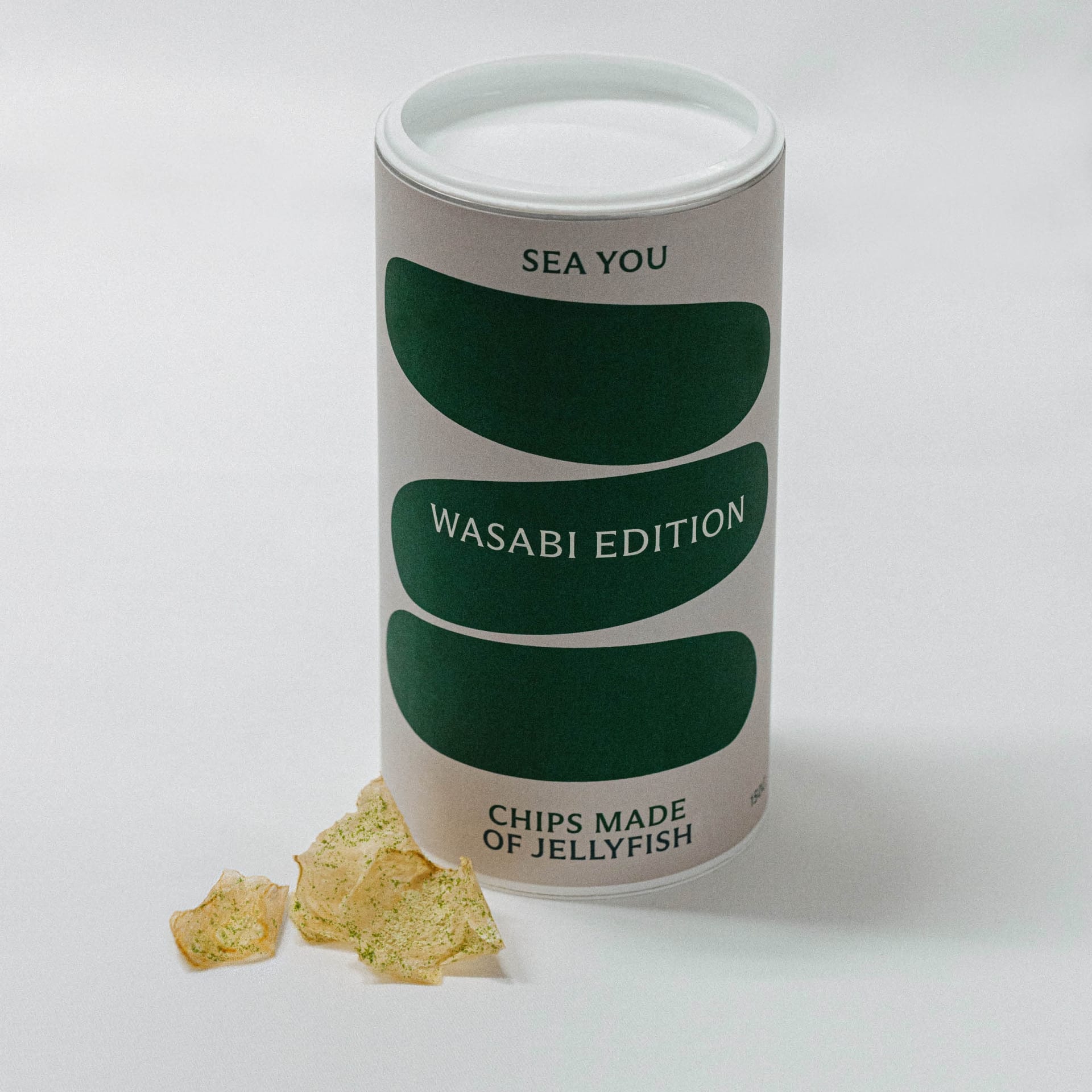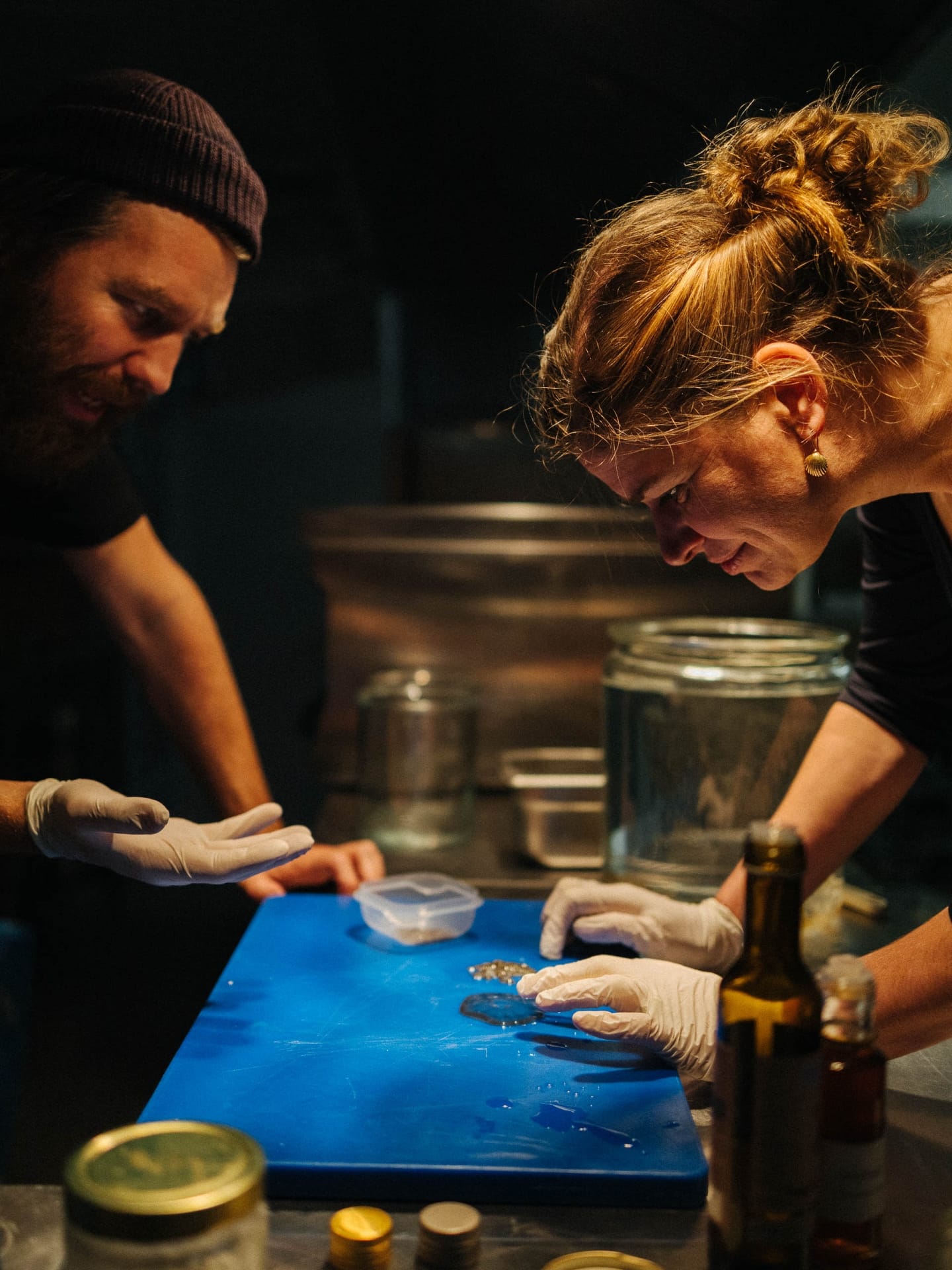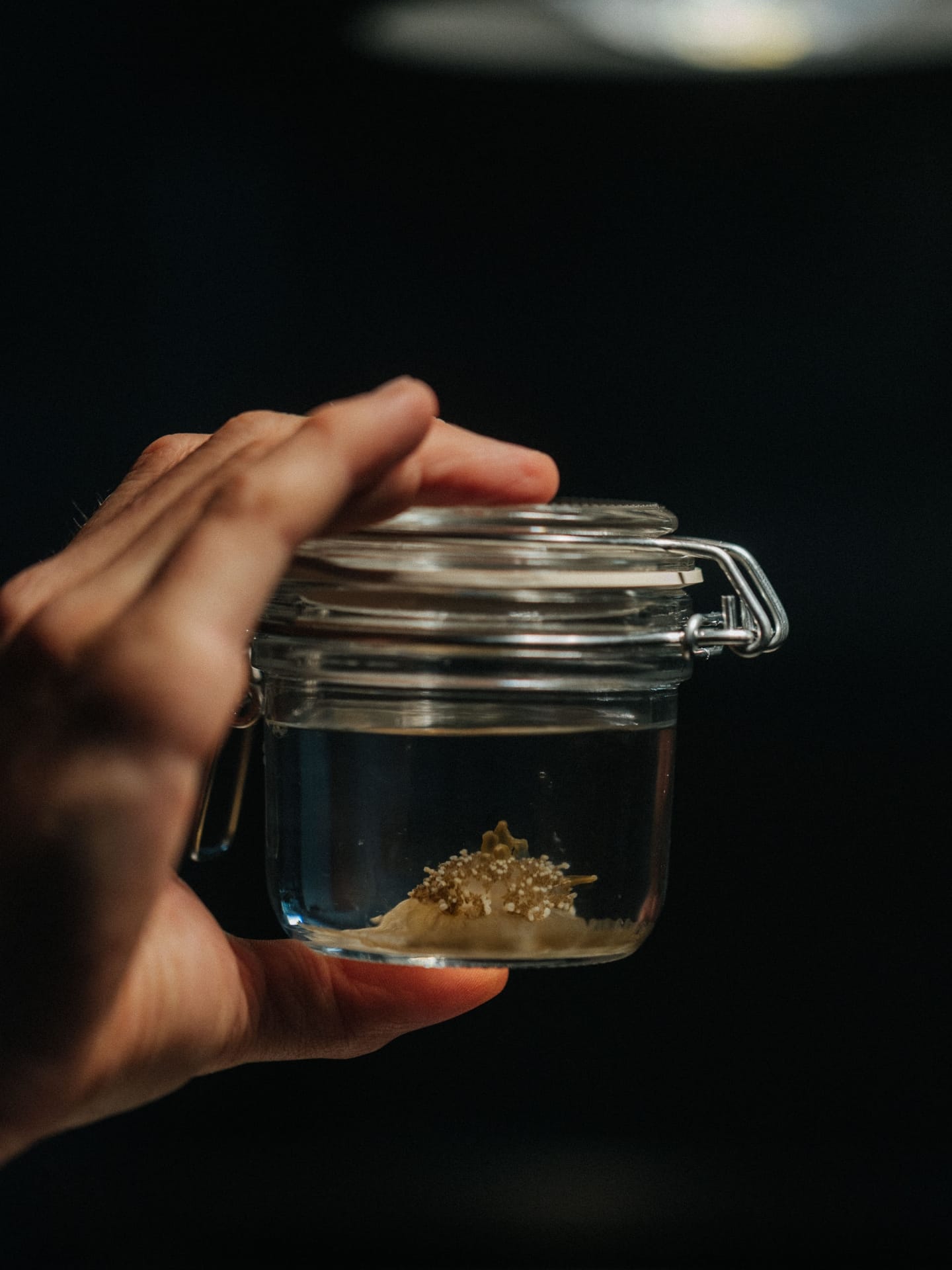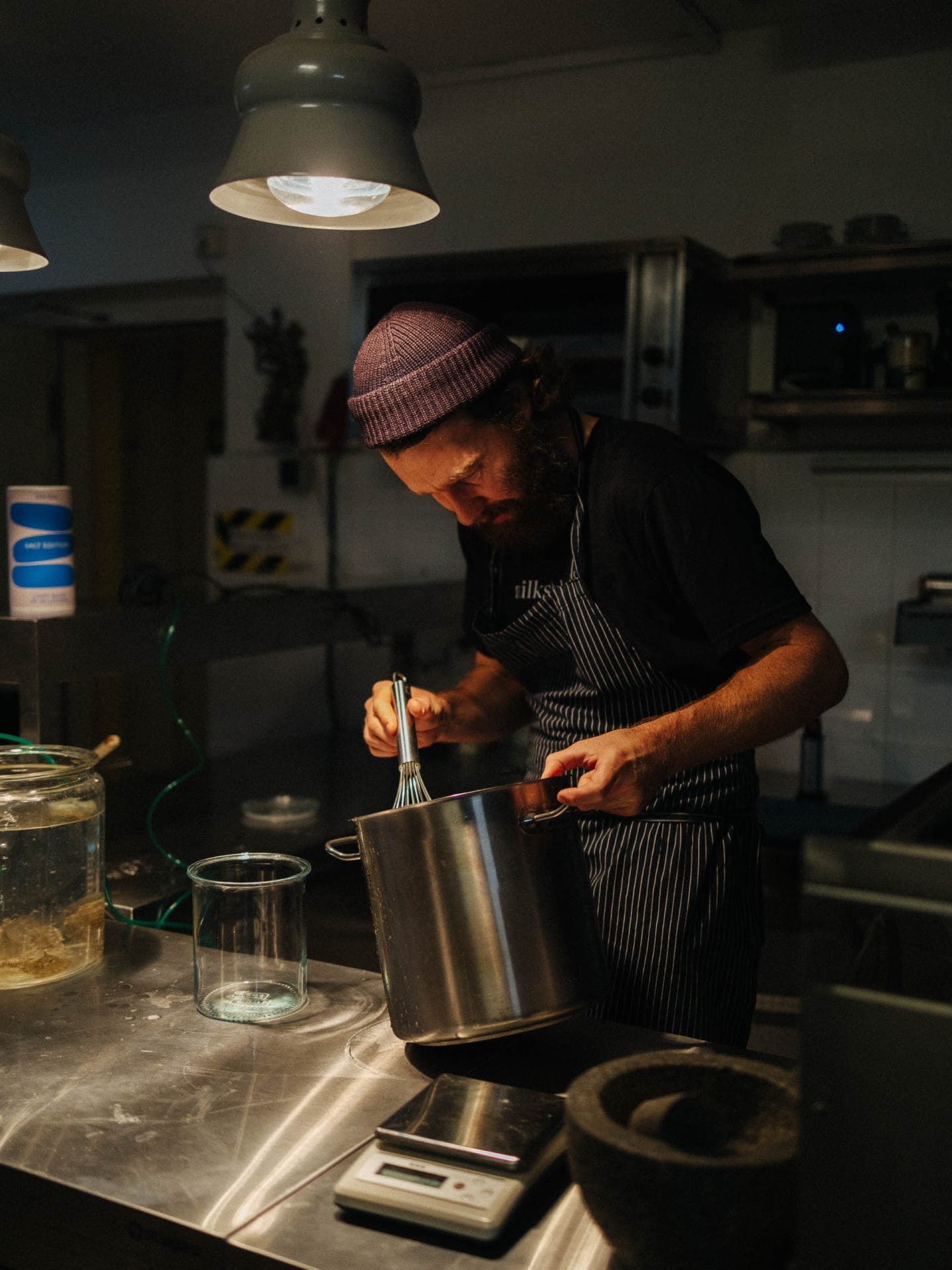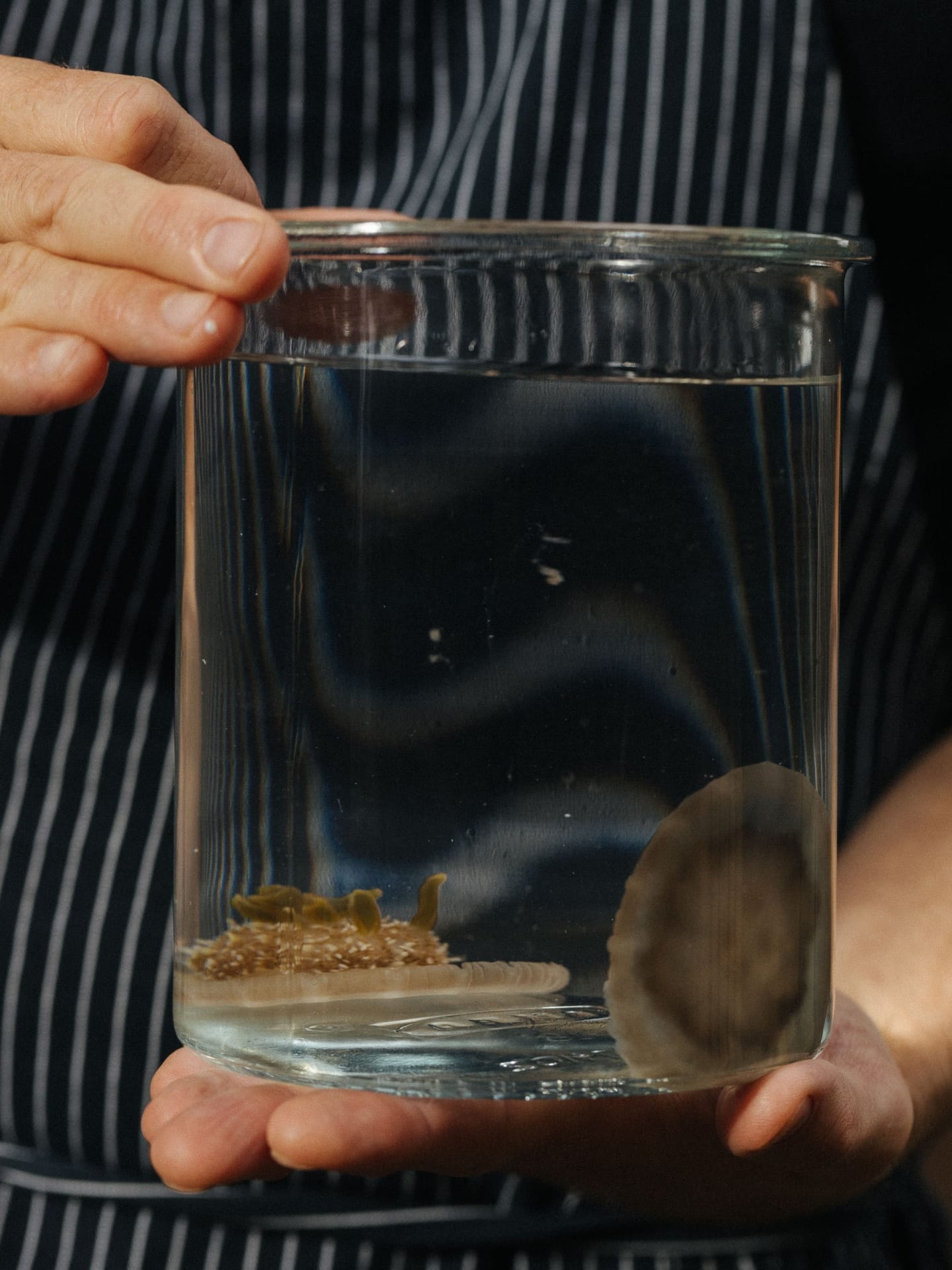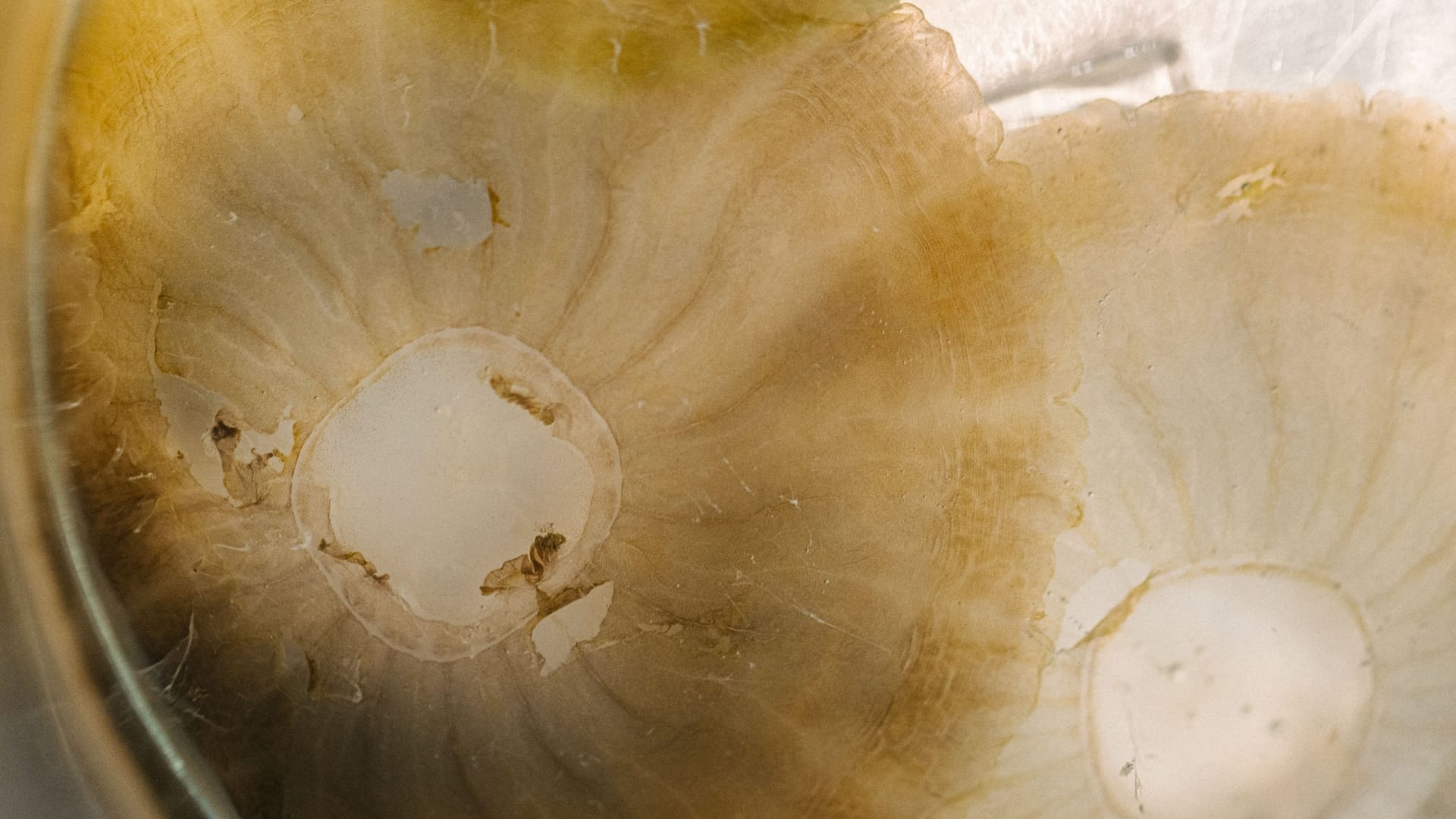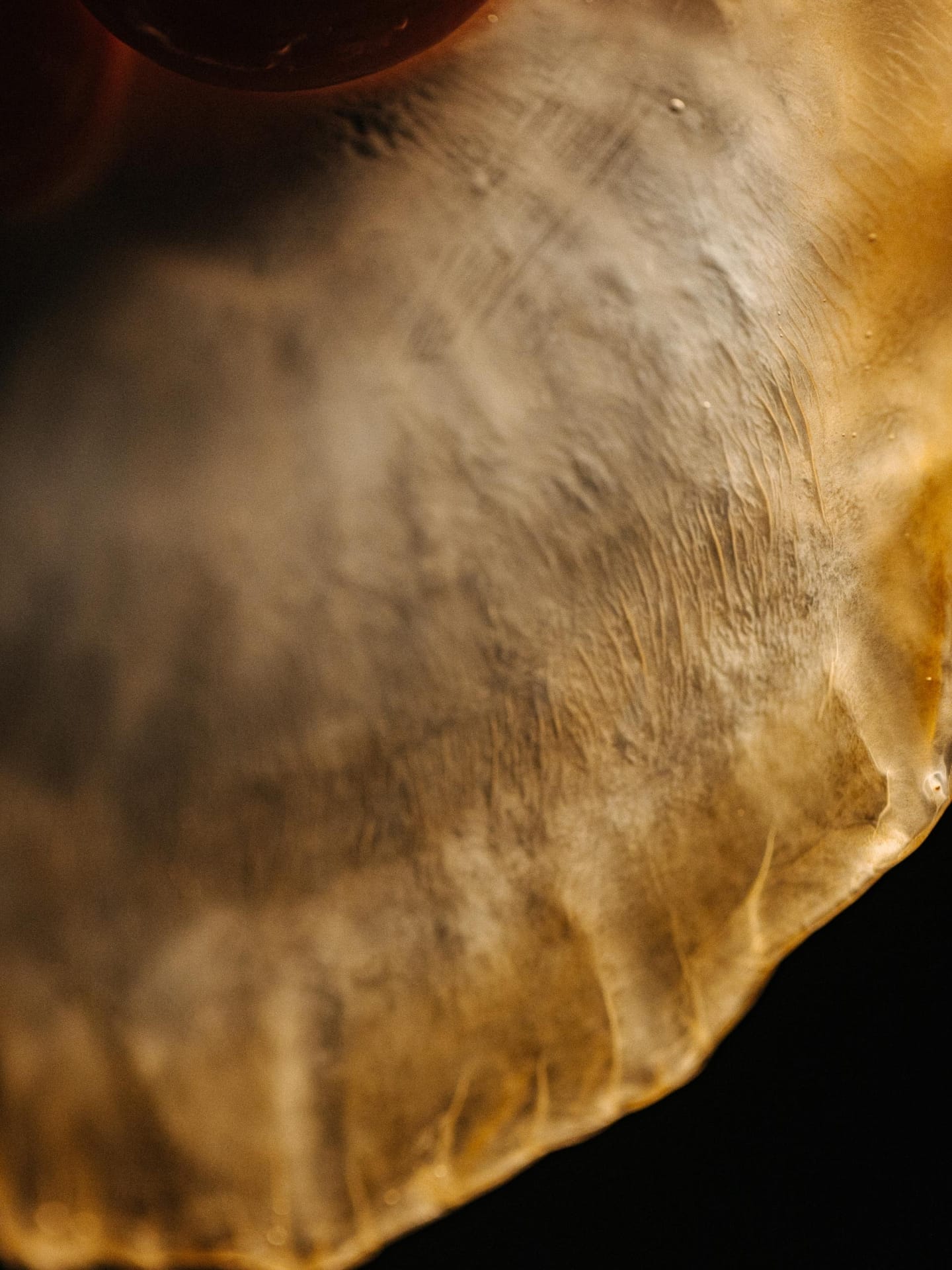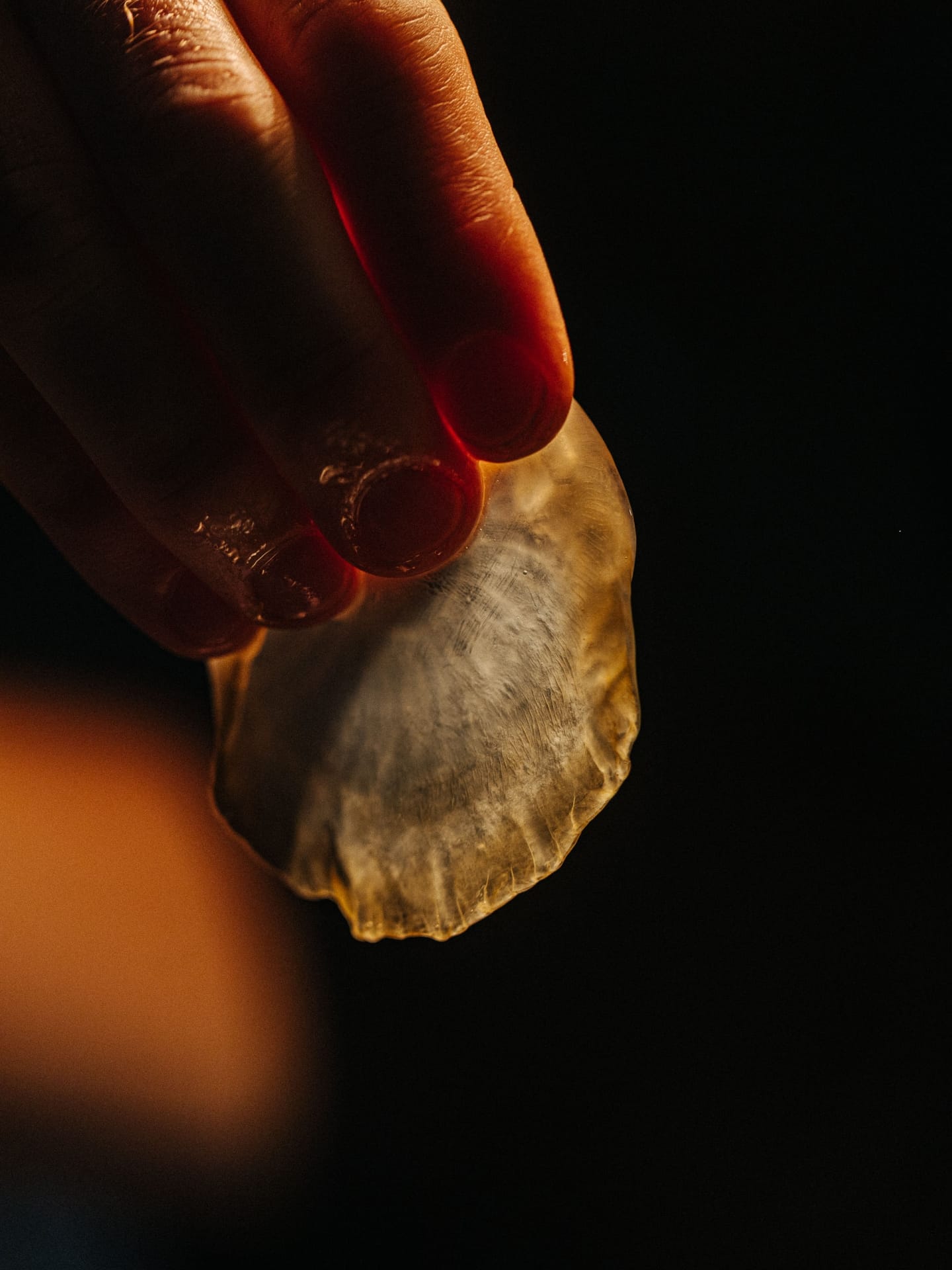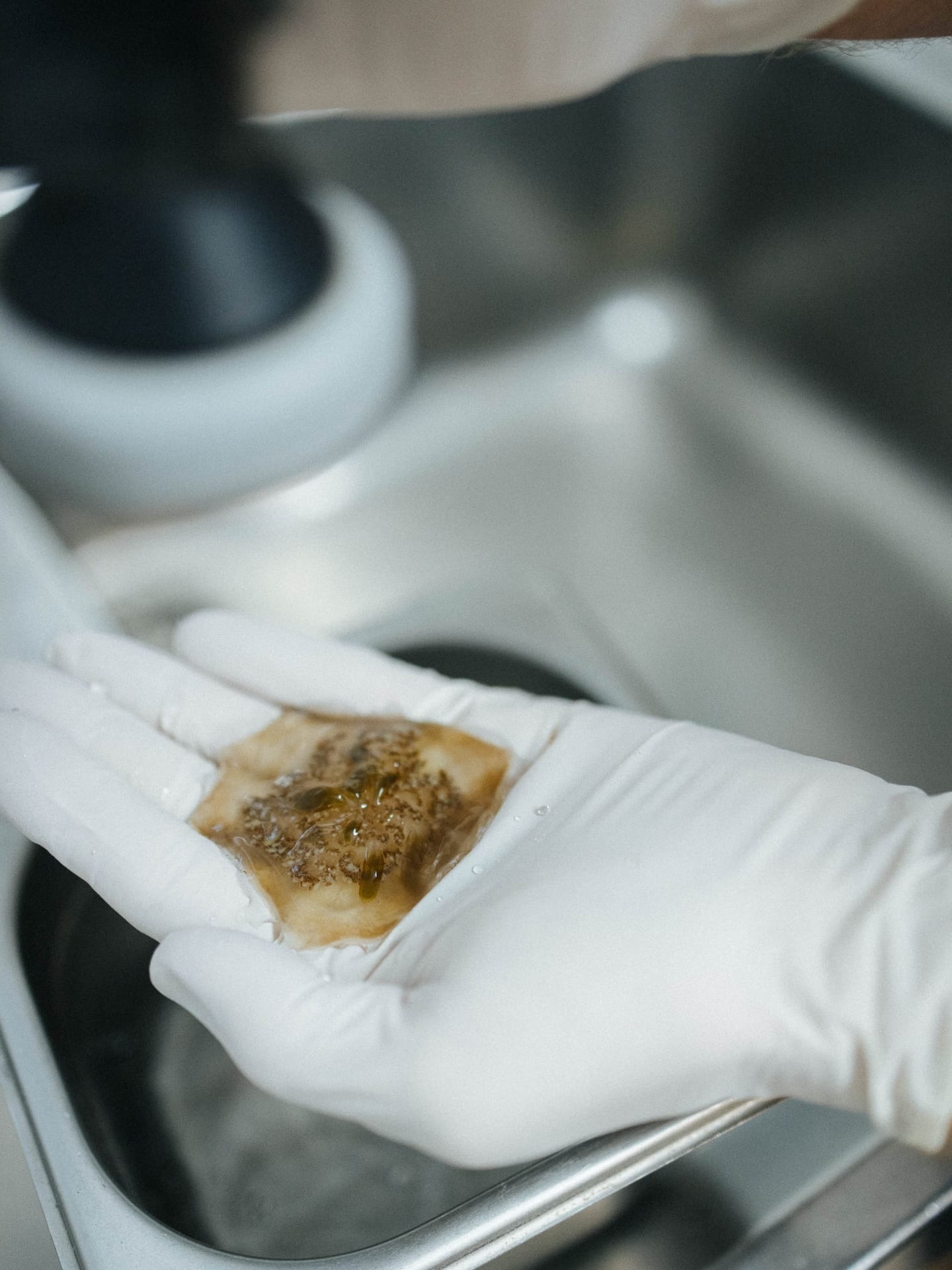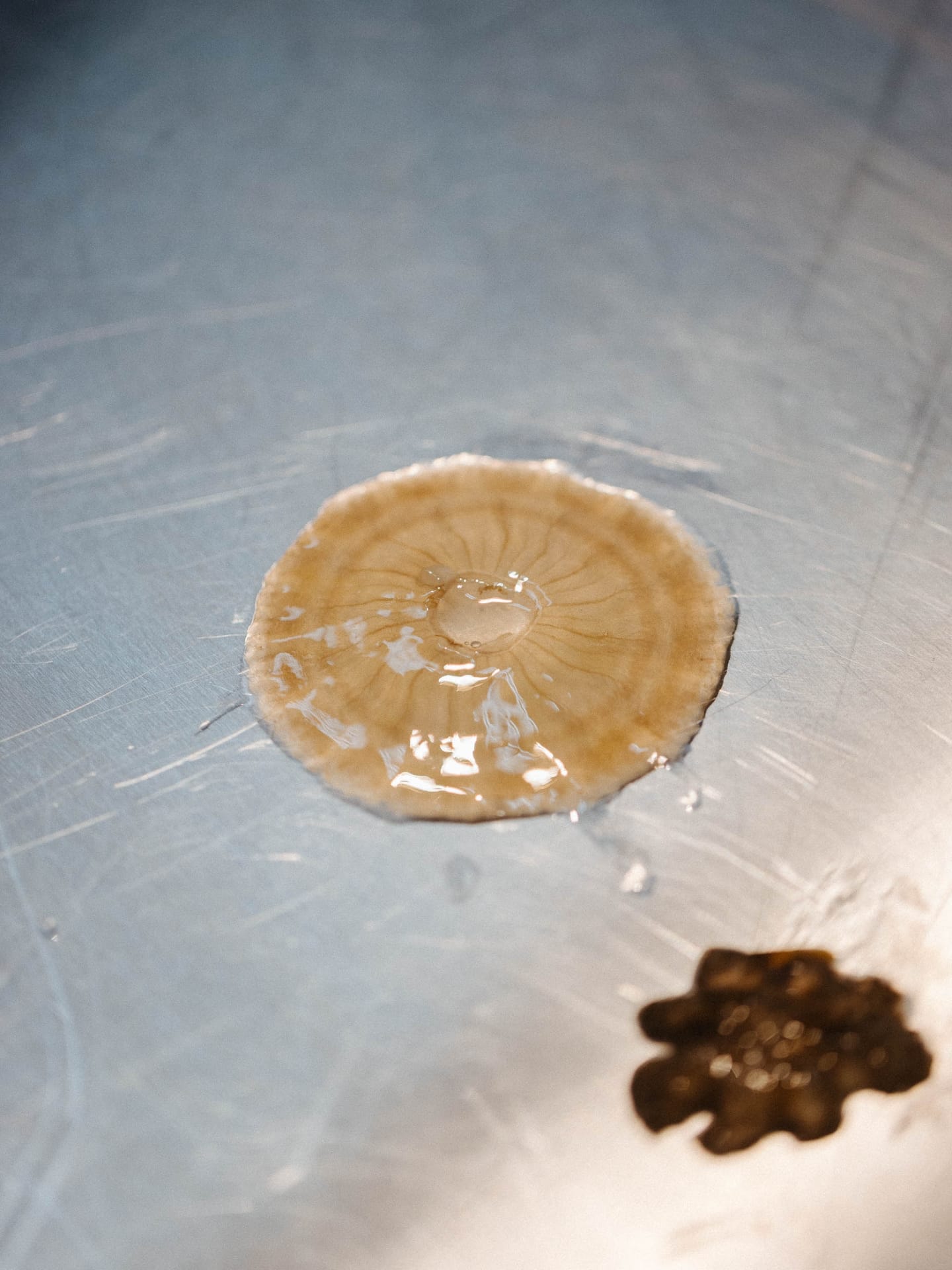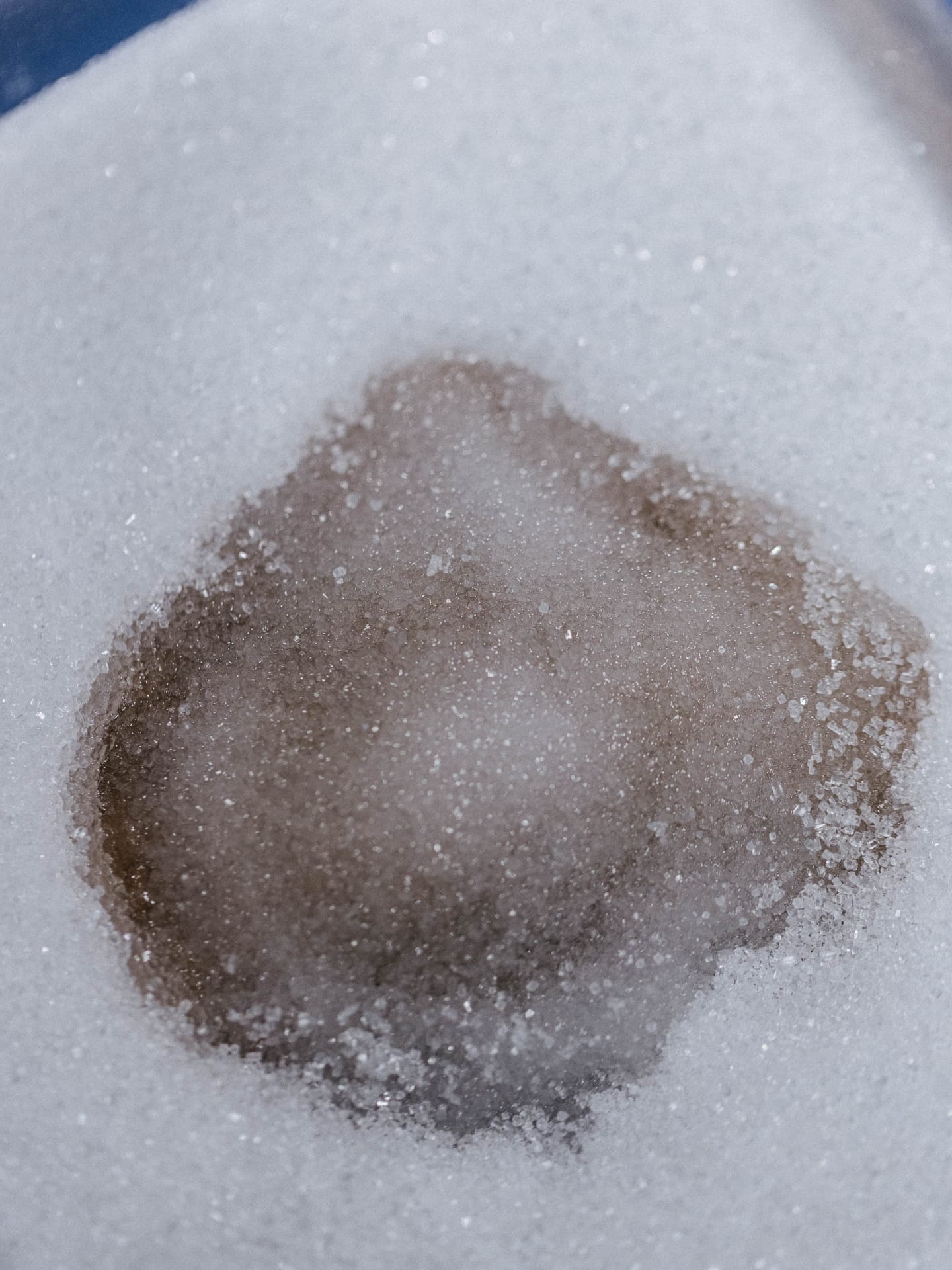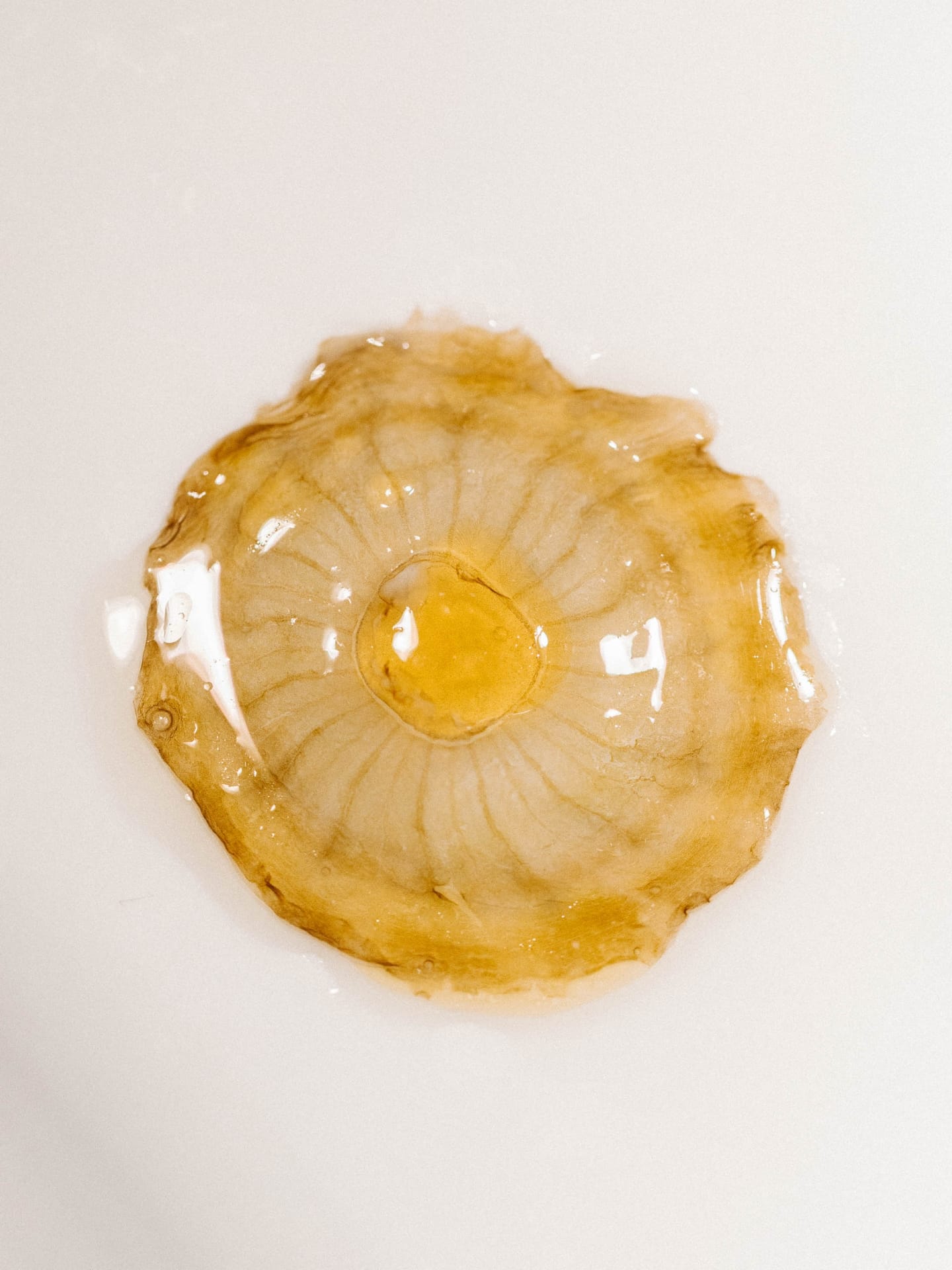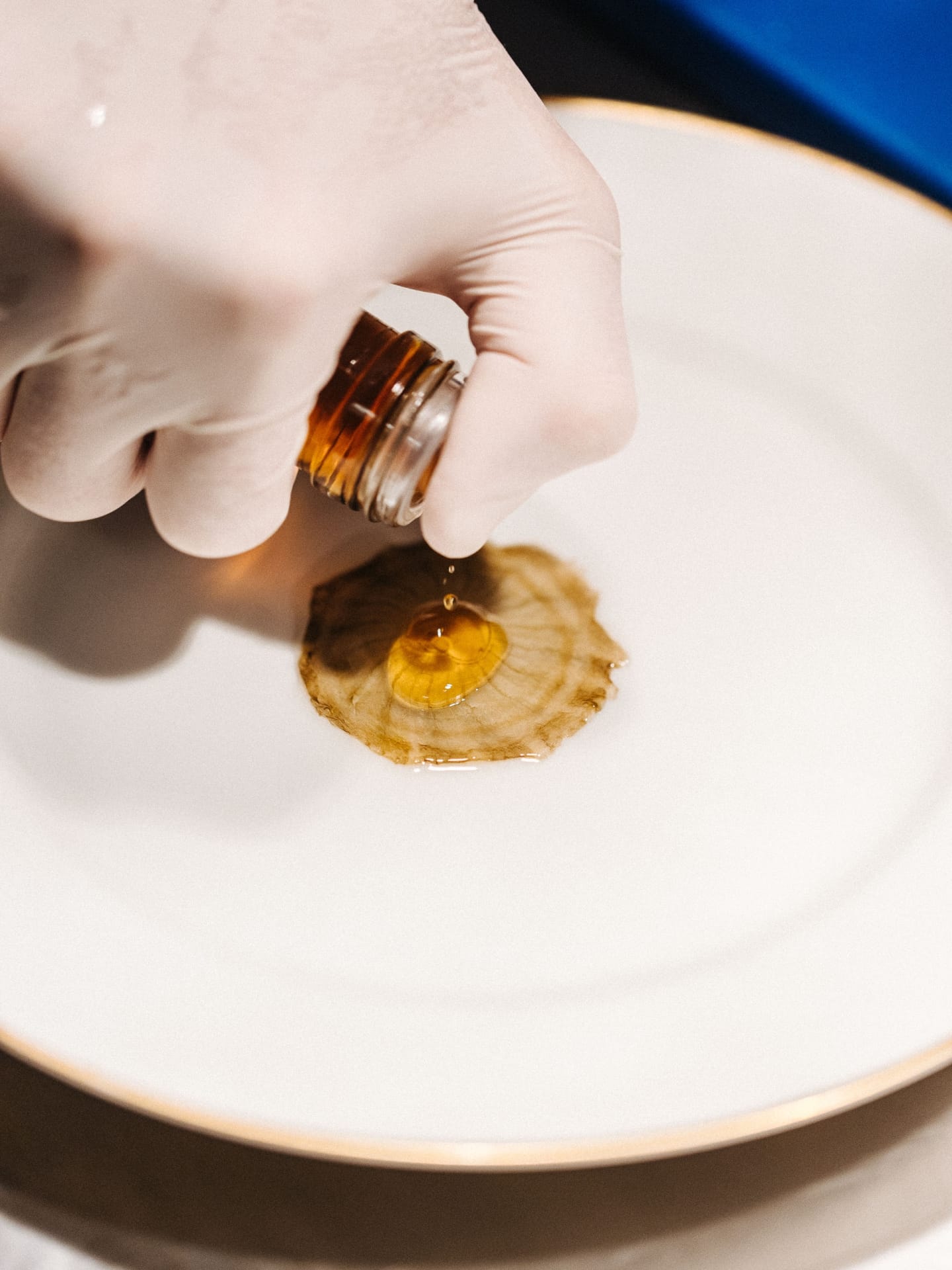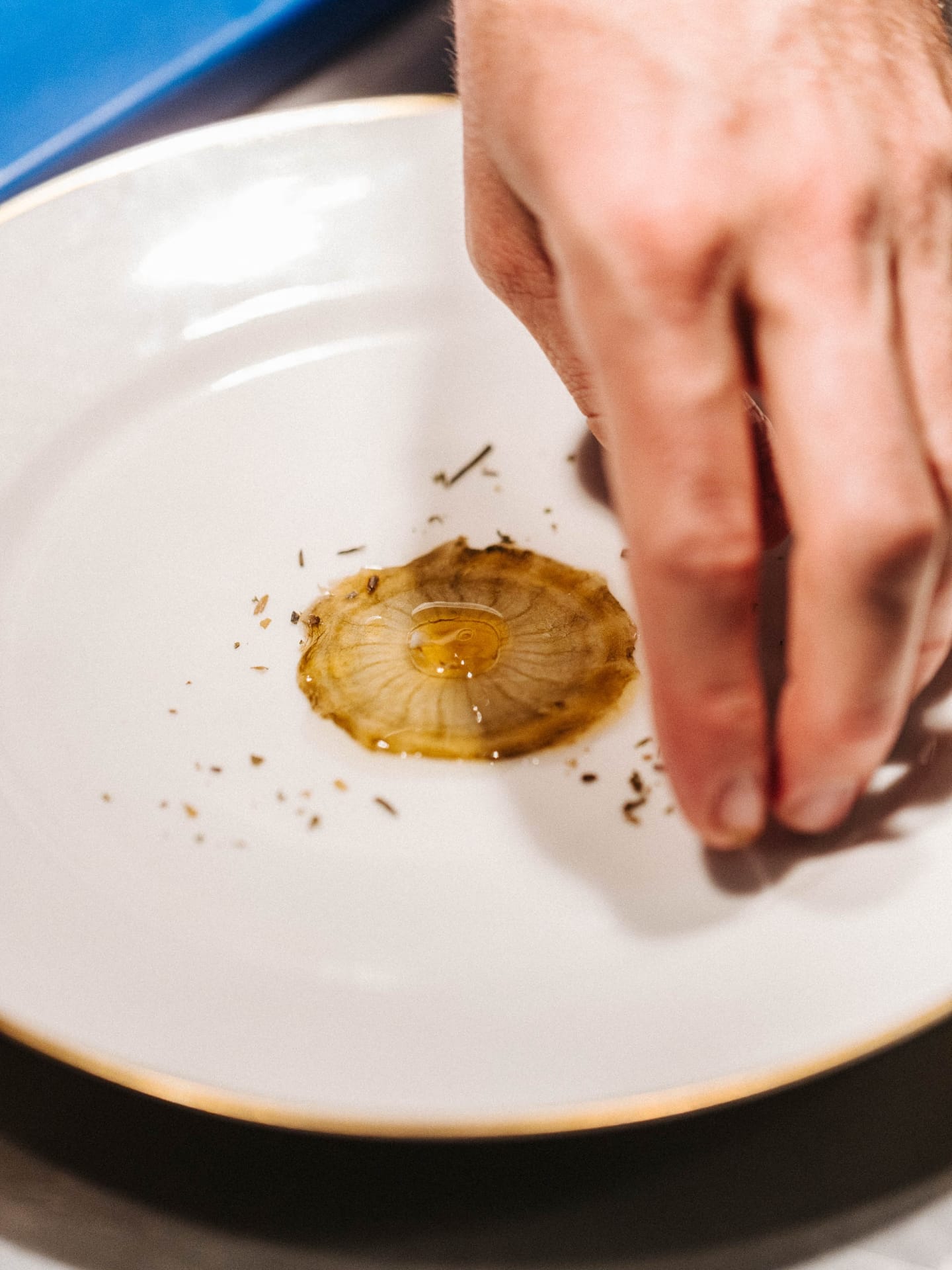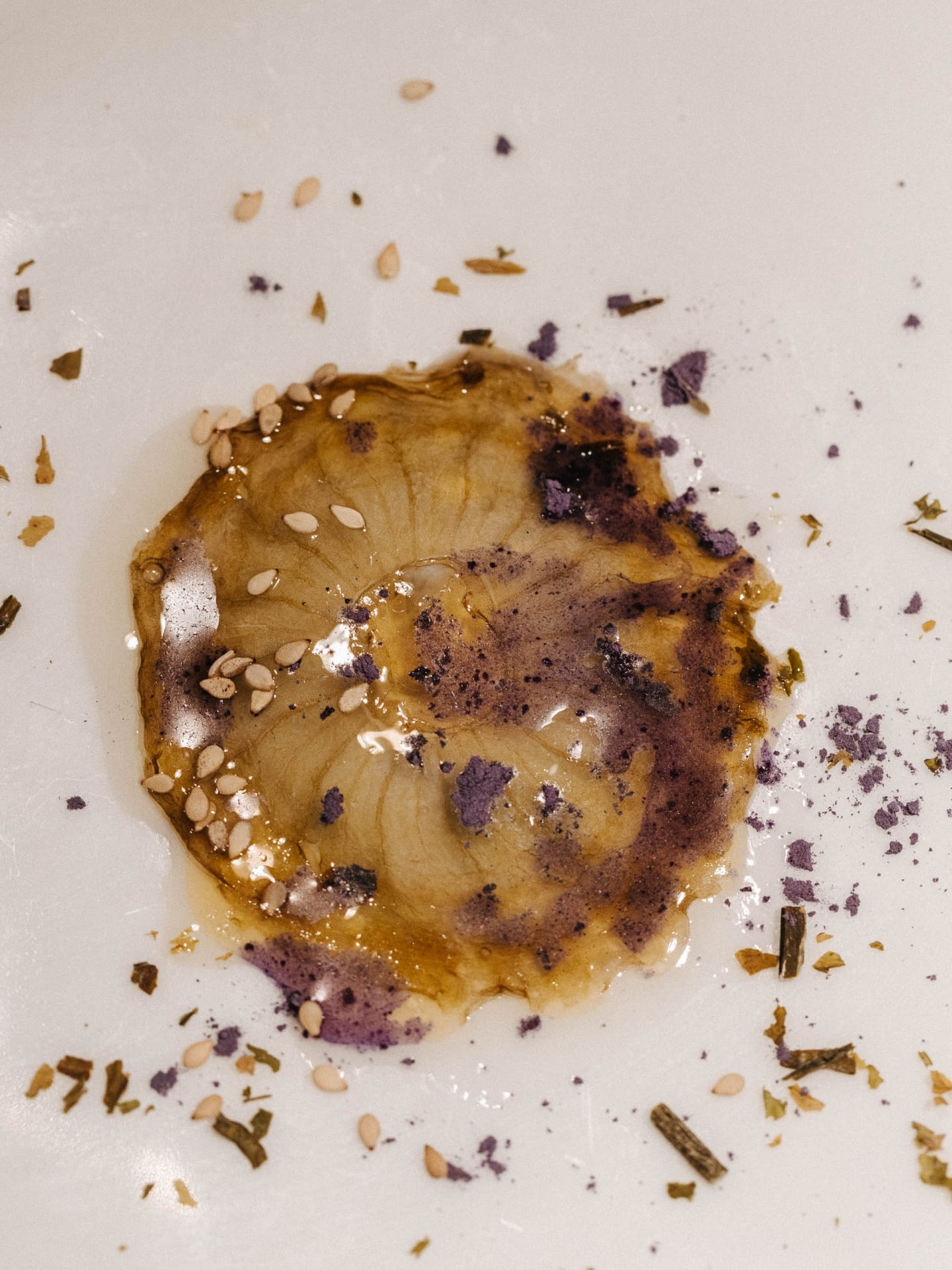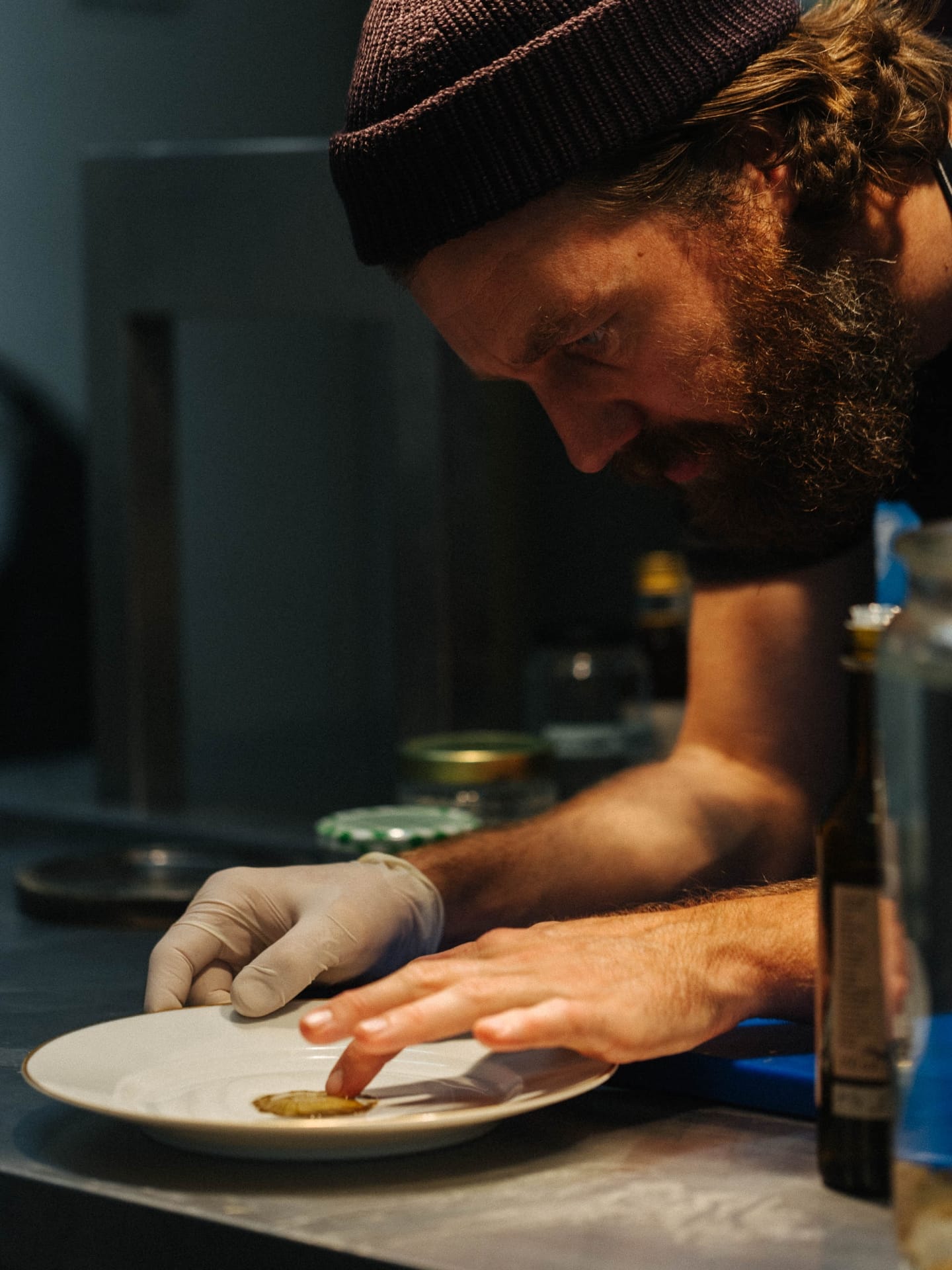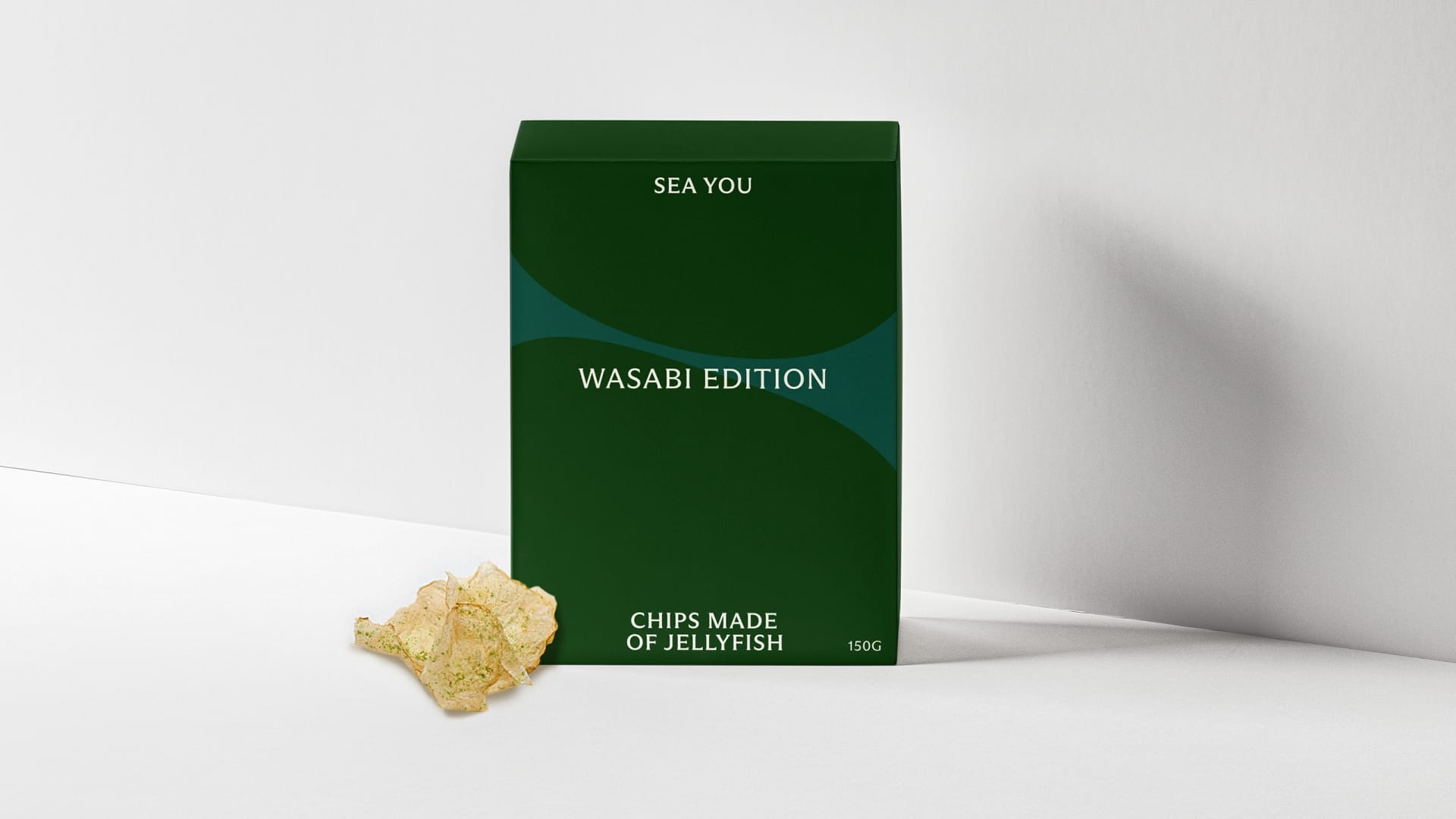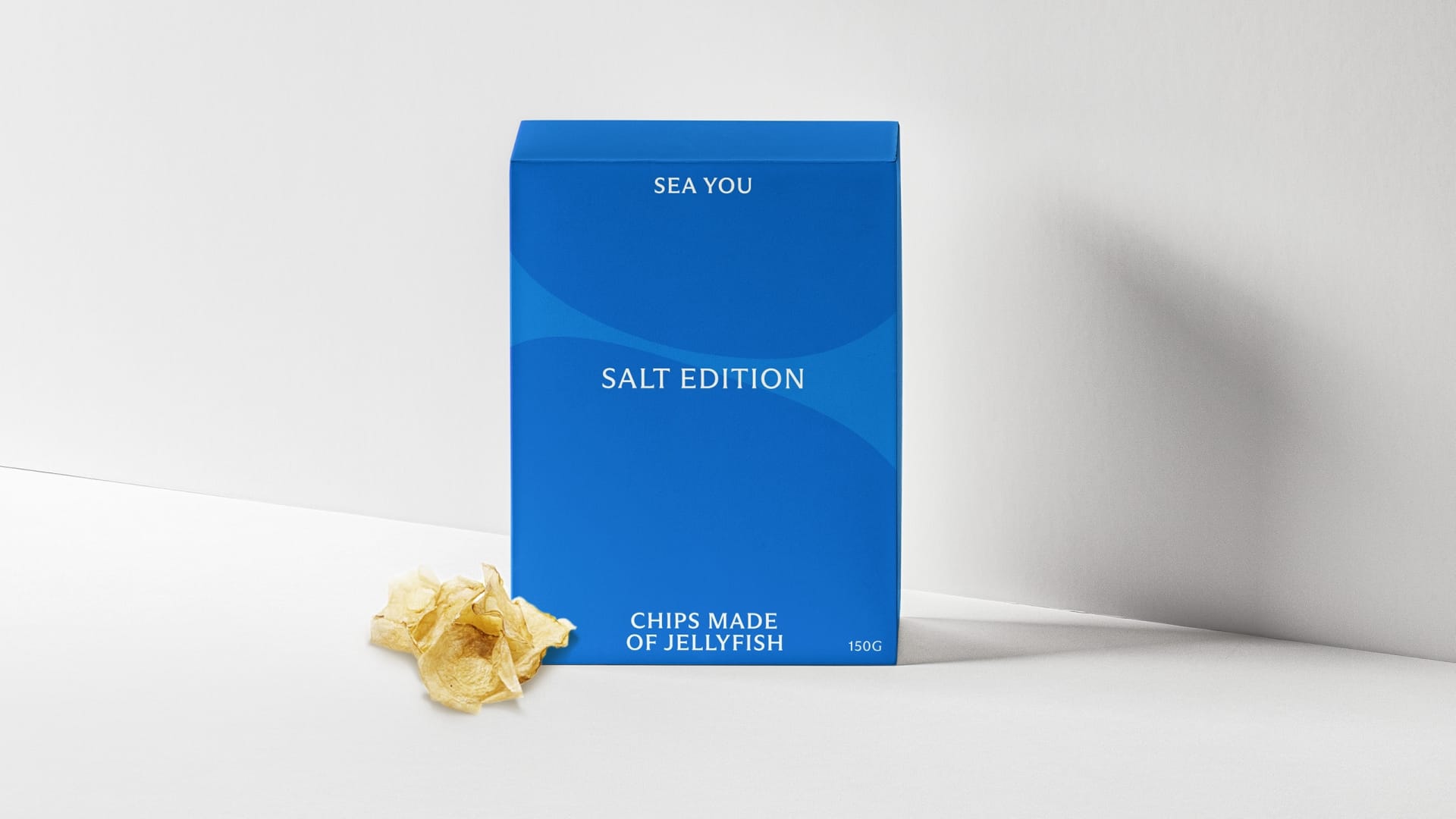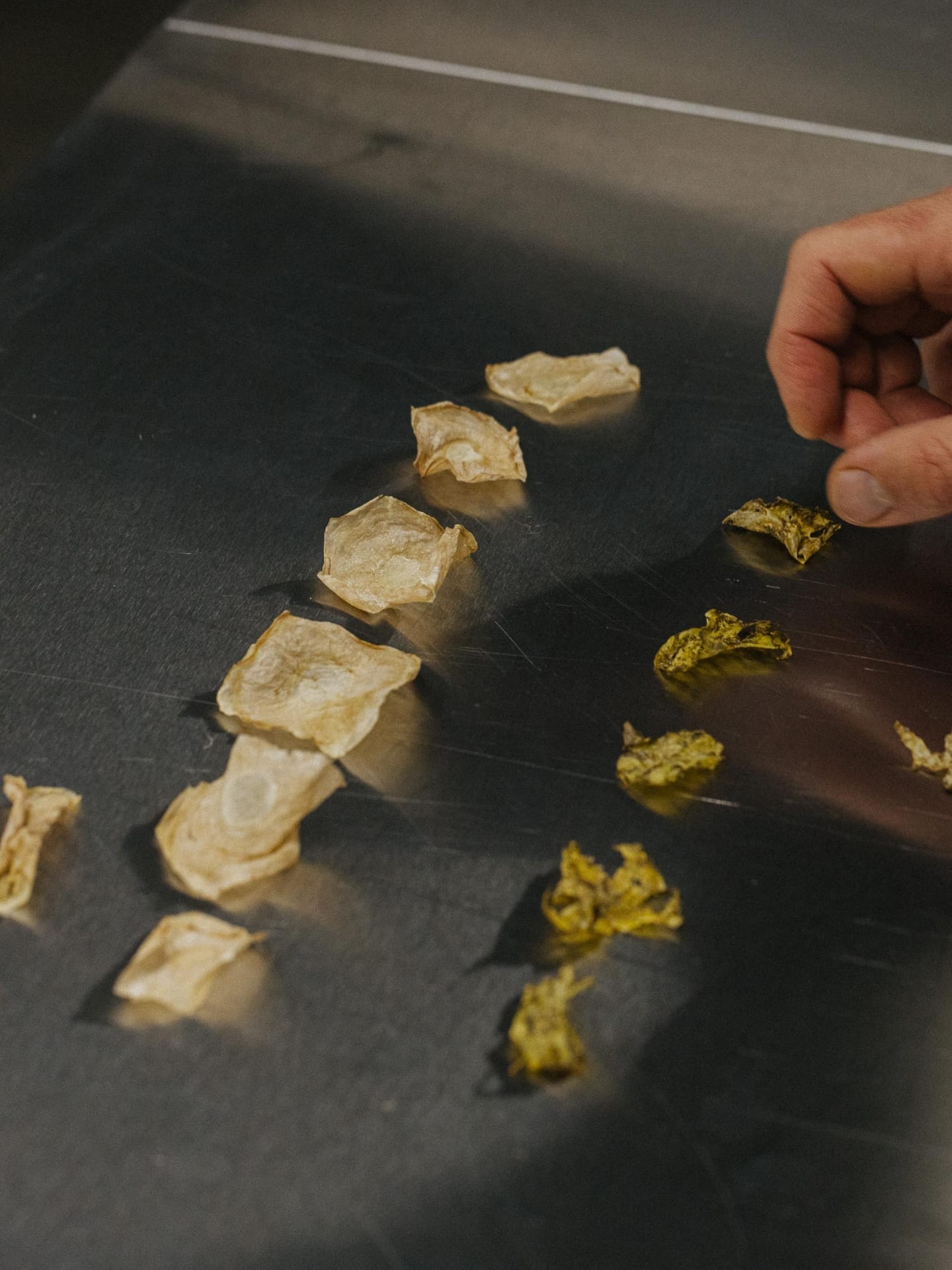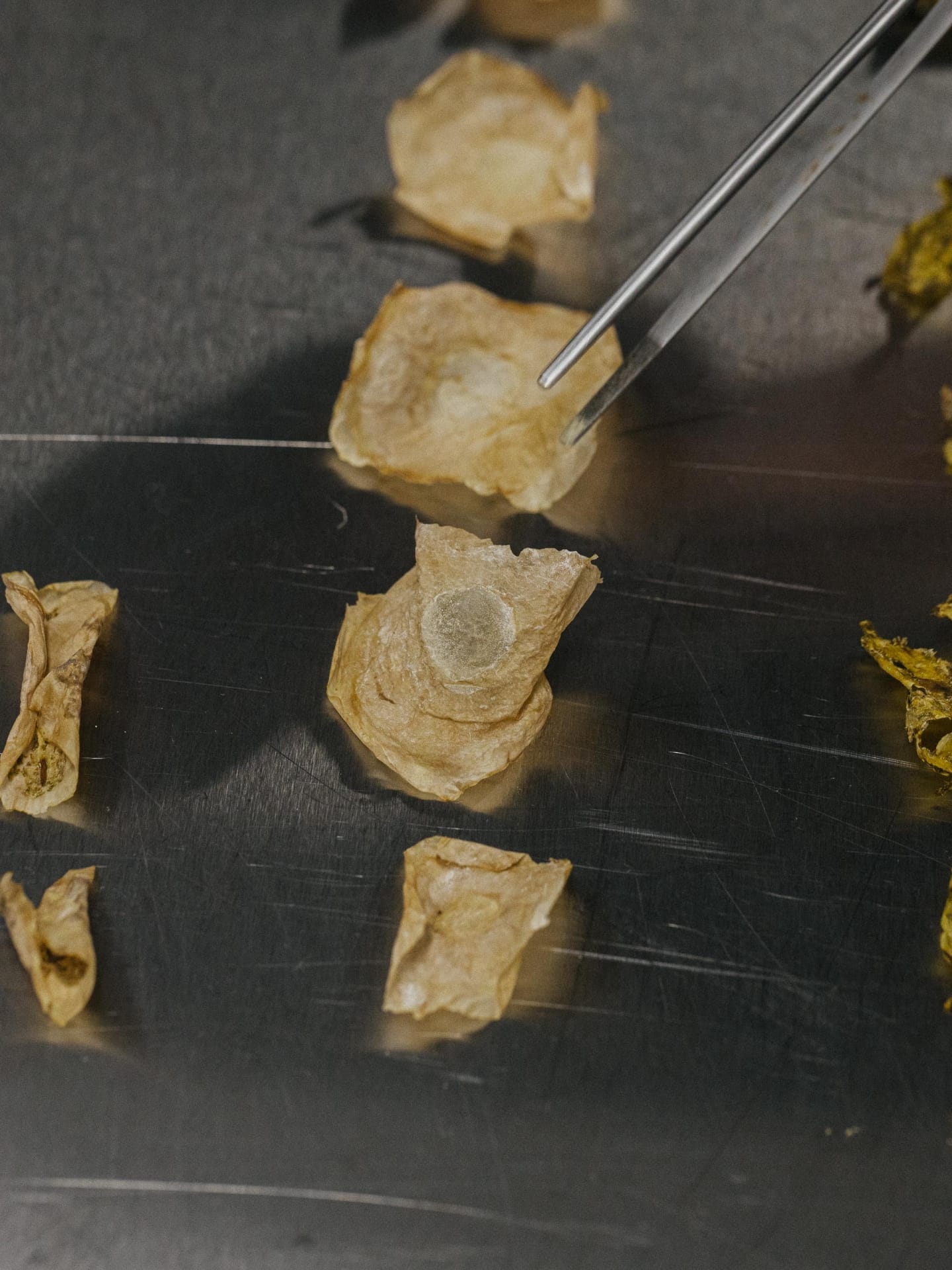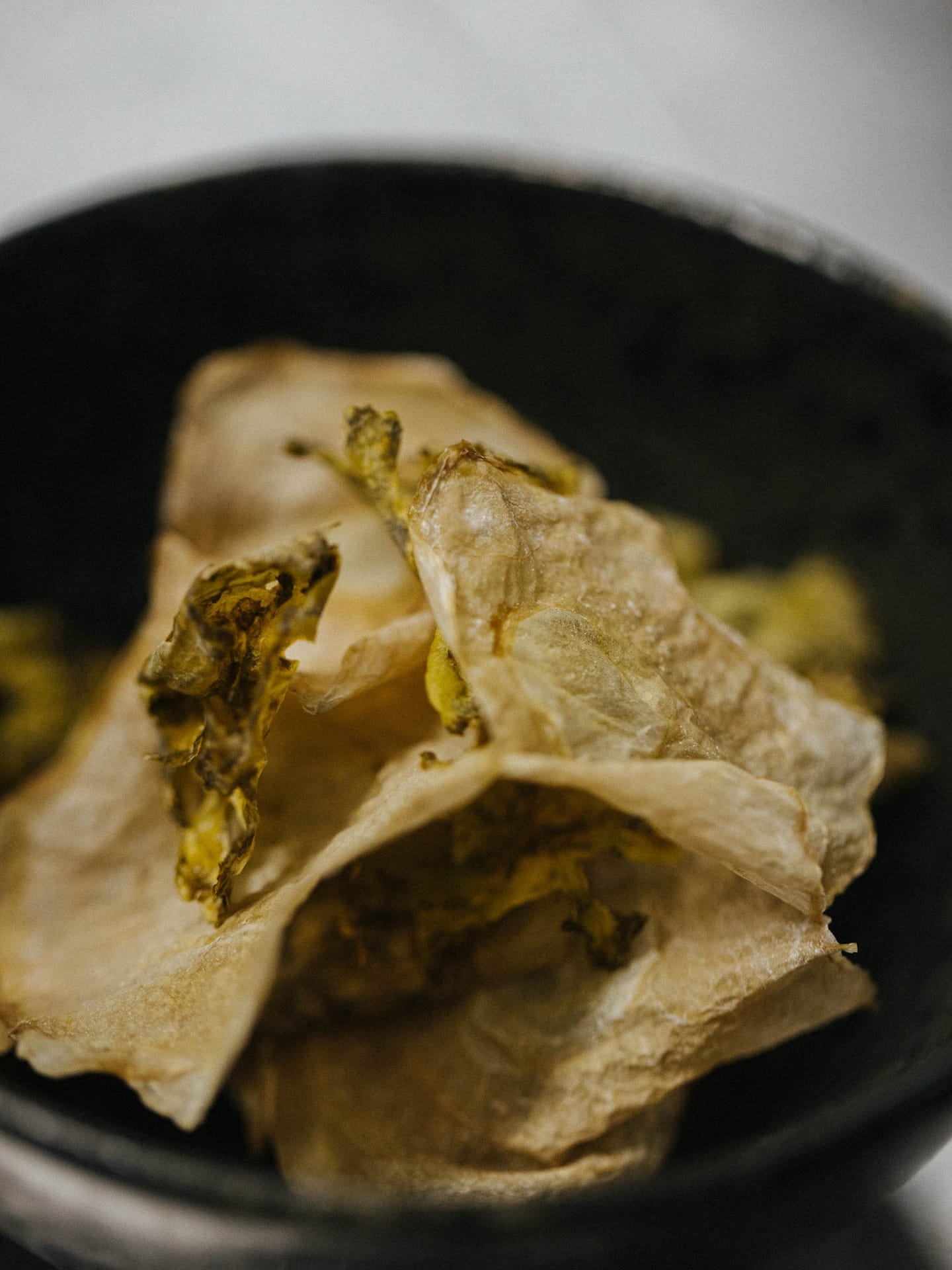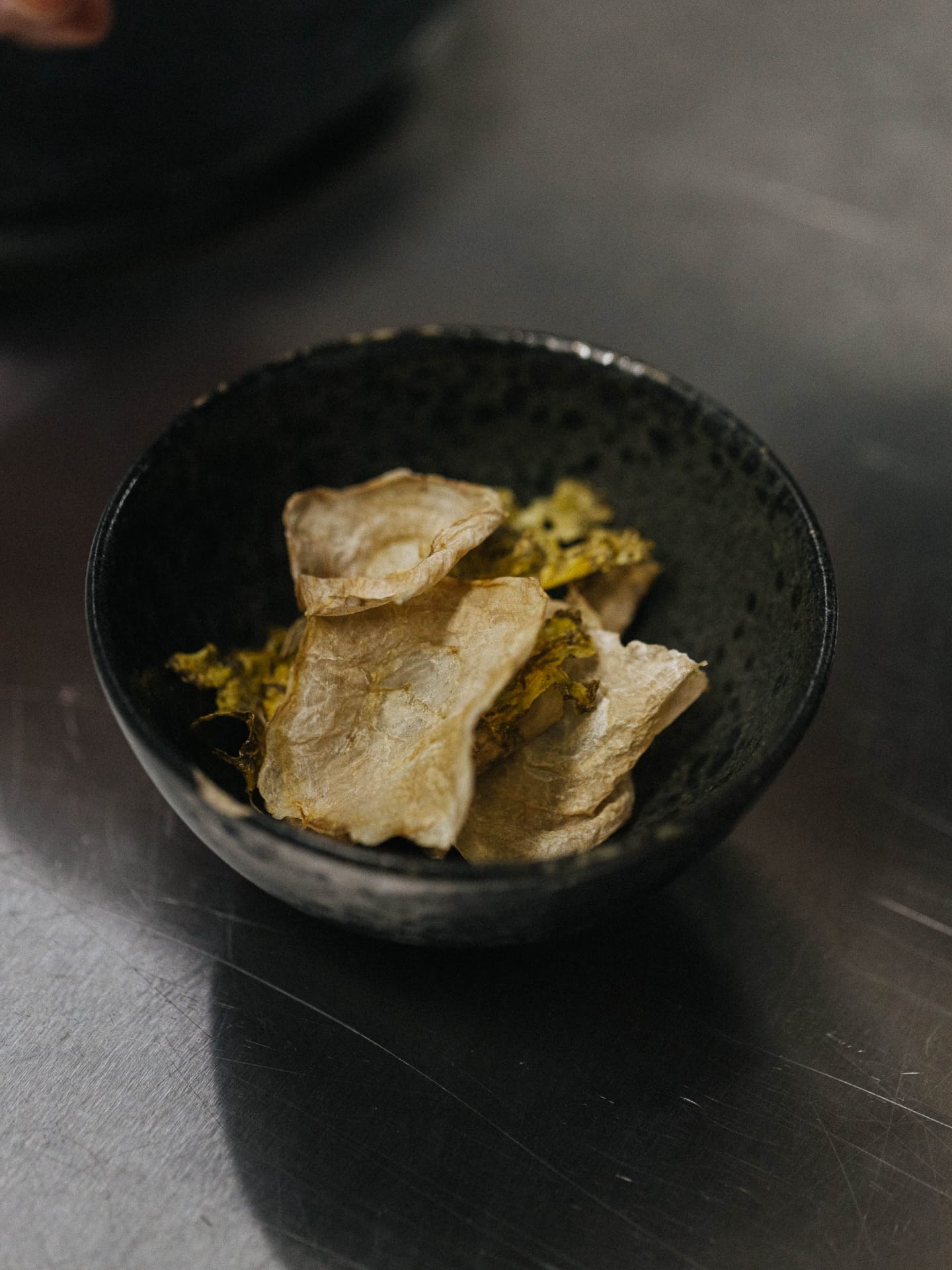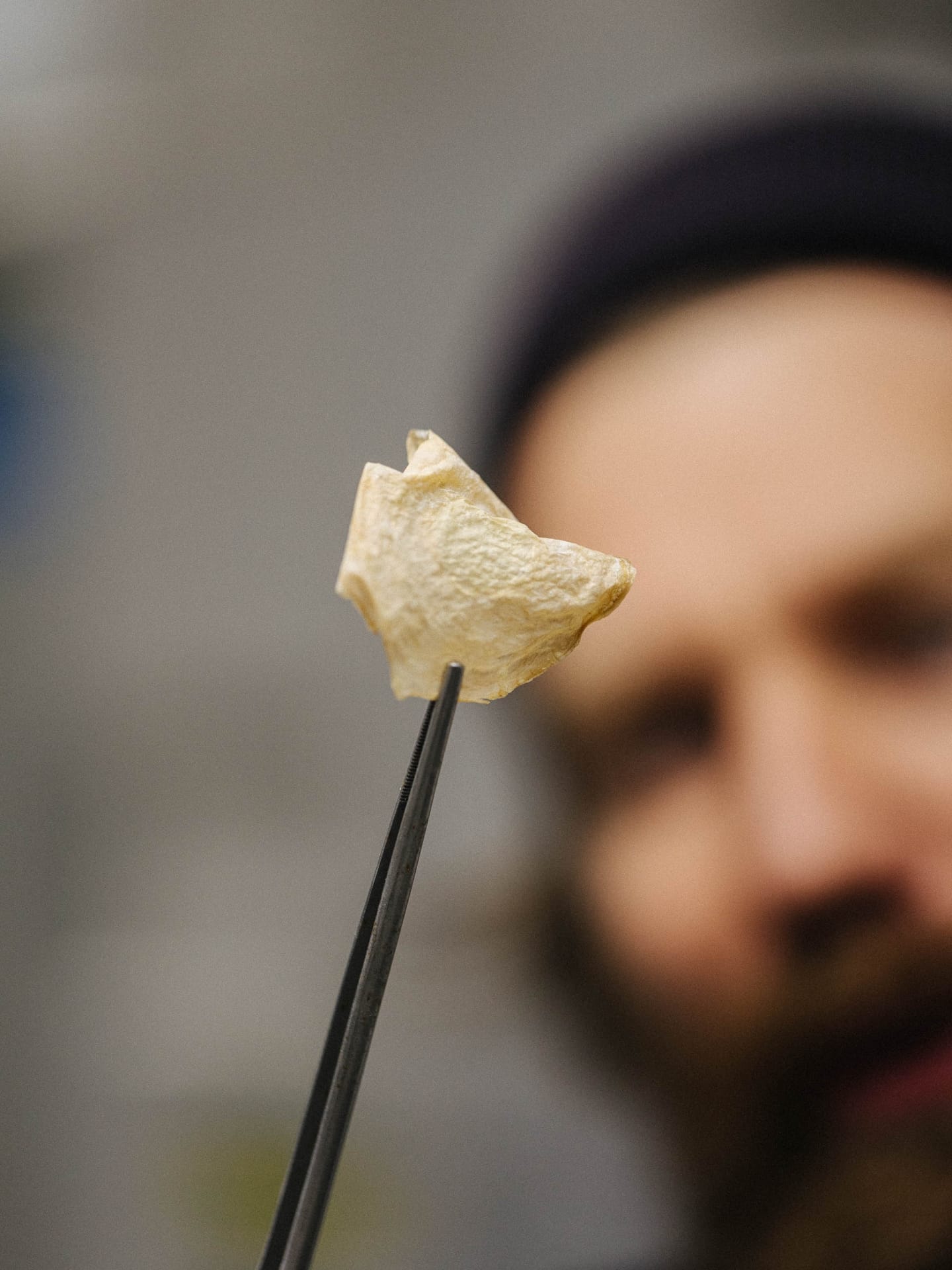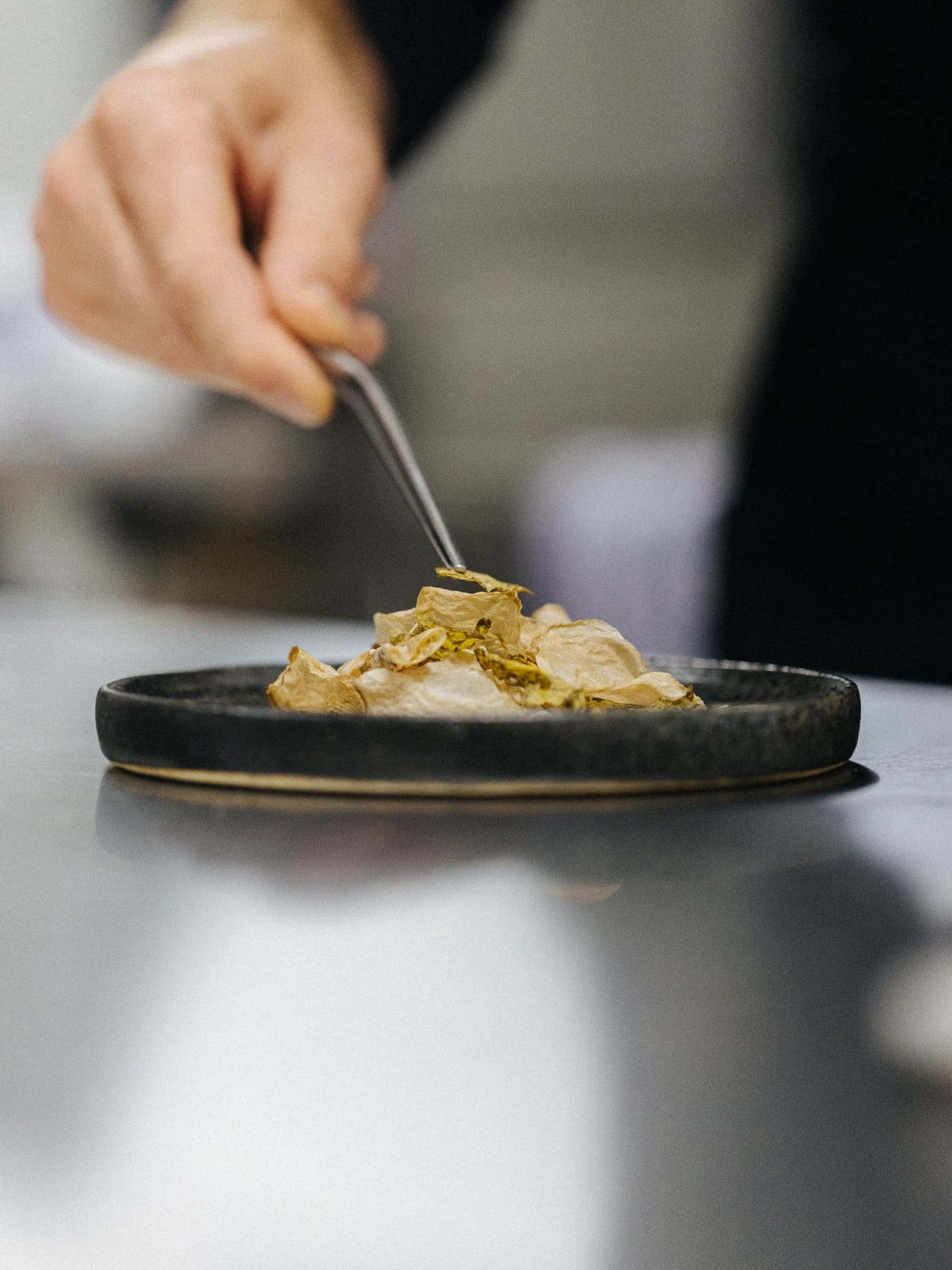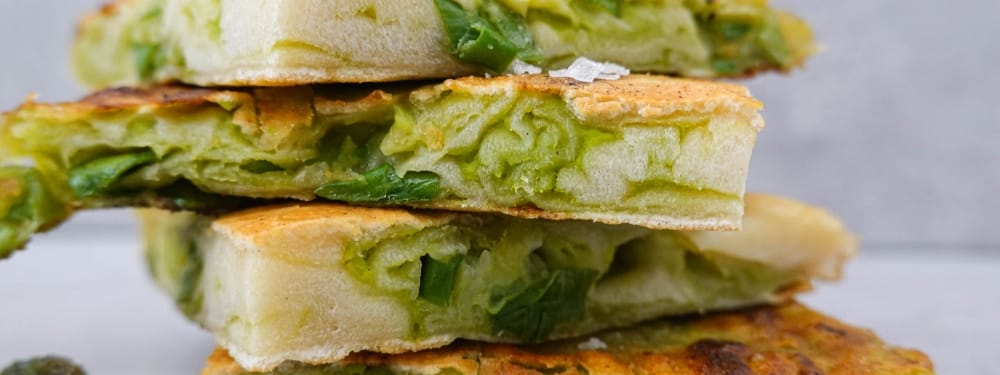The sound of the sea in your mouth
When we read about the fact that scientists in Bremen breed jellyfish and that they could help ensure human nutrition in the future, we listened carefully: jellyfish, food, future – we wanted to get to the bottom of it.
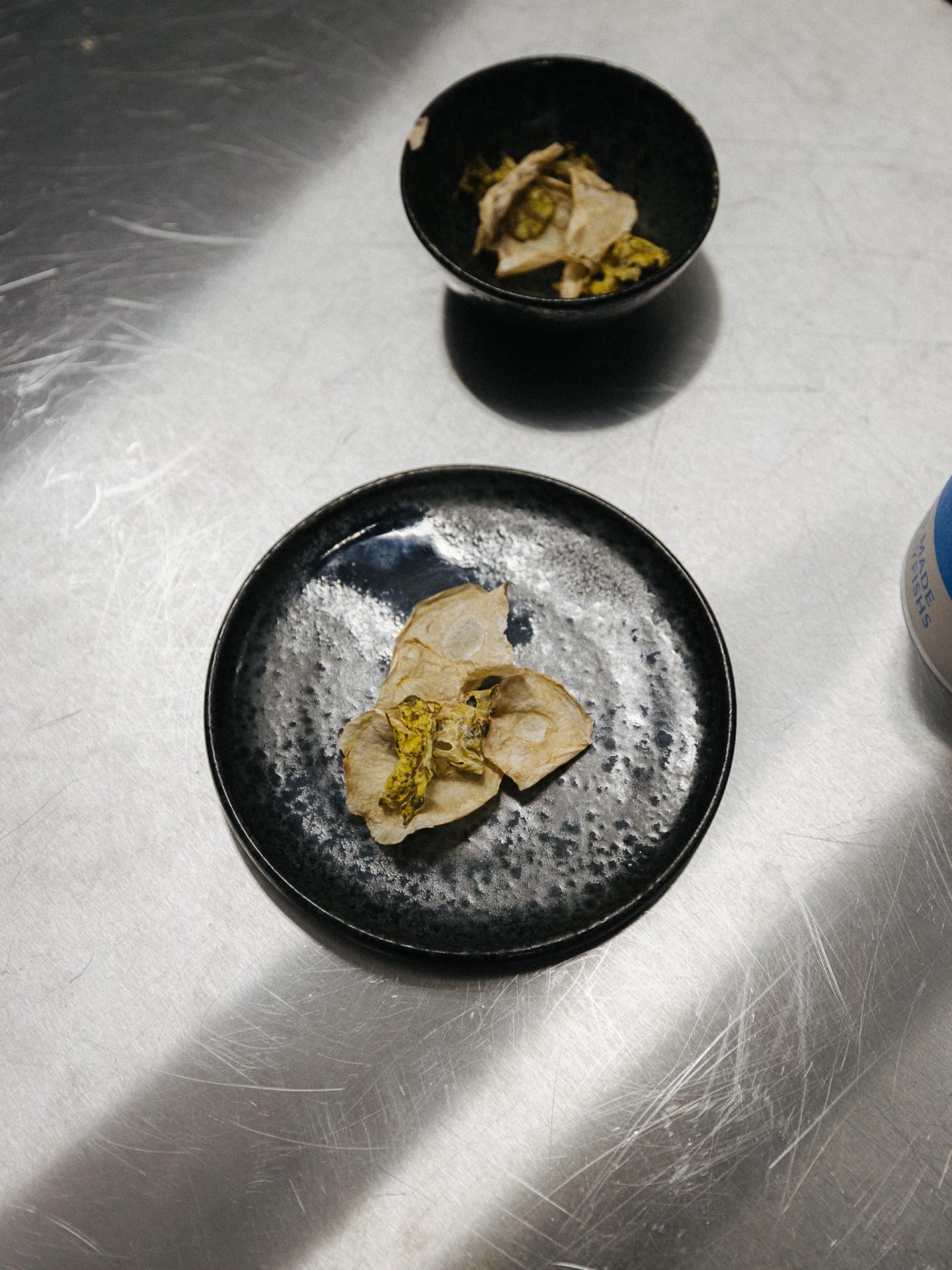
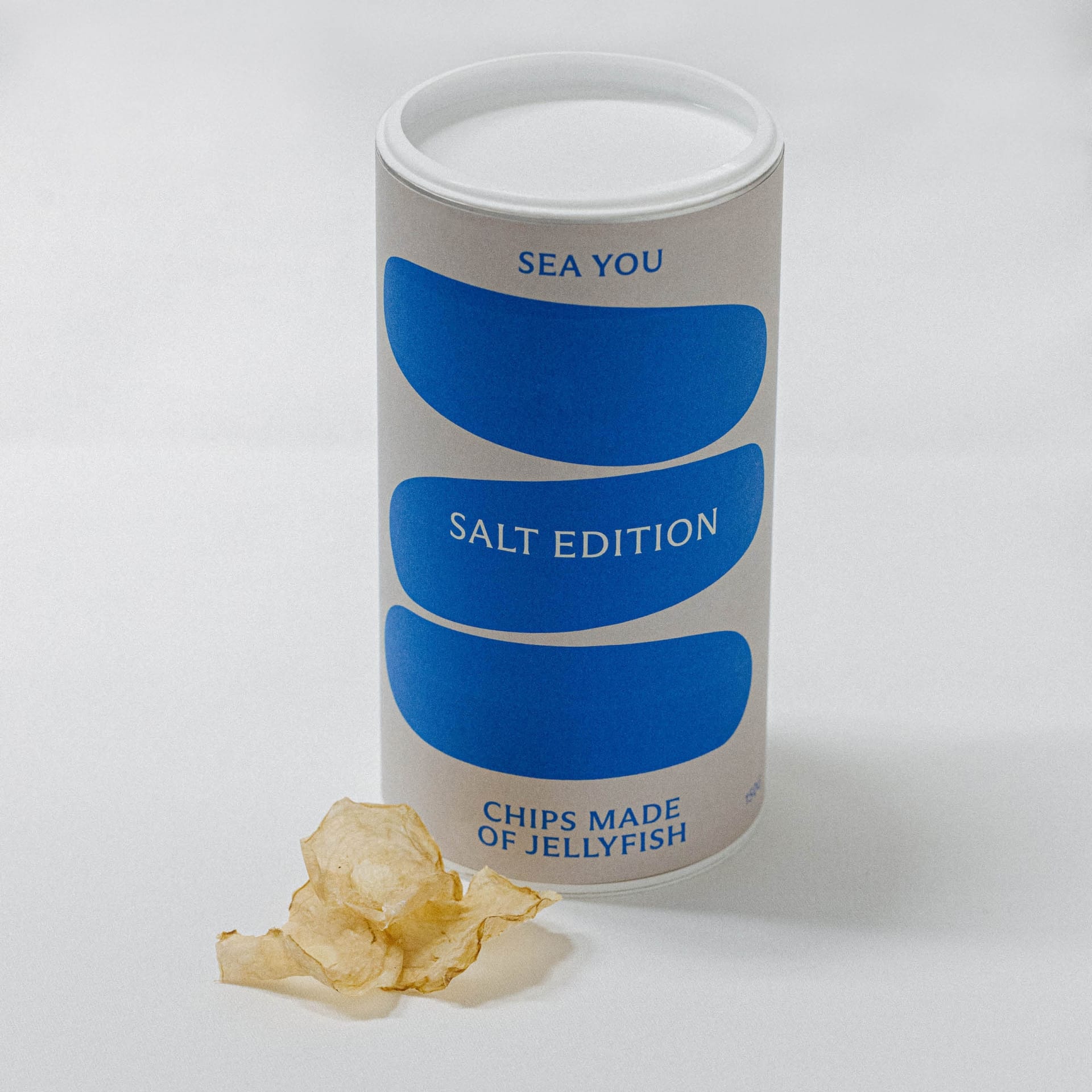
Jellyfish chips for future
The scientist who deals with jellyfish and the sea in general is the marine ecologist Dr. Holger Kühnhold from the Leibniz Center for Tropical Marine Research in Bremen. We initially talked for an interview and it became clear that both sides are definitely interested in processing jellyfish in the kitchen.
The jellyfish are here …
A few weeks later the doorbell rings and a large styrofoam package is handed in. They are then our jellyfish. We put them in an improvised saltwater aquarium. With a supply of air and special sea salt and first observed the animals devoutly. Jellyfish are incredibly beautiful and move elegantly through the water.
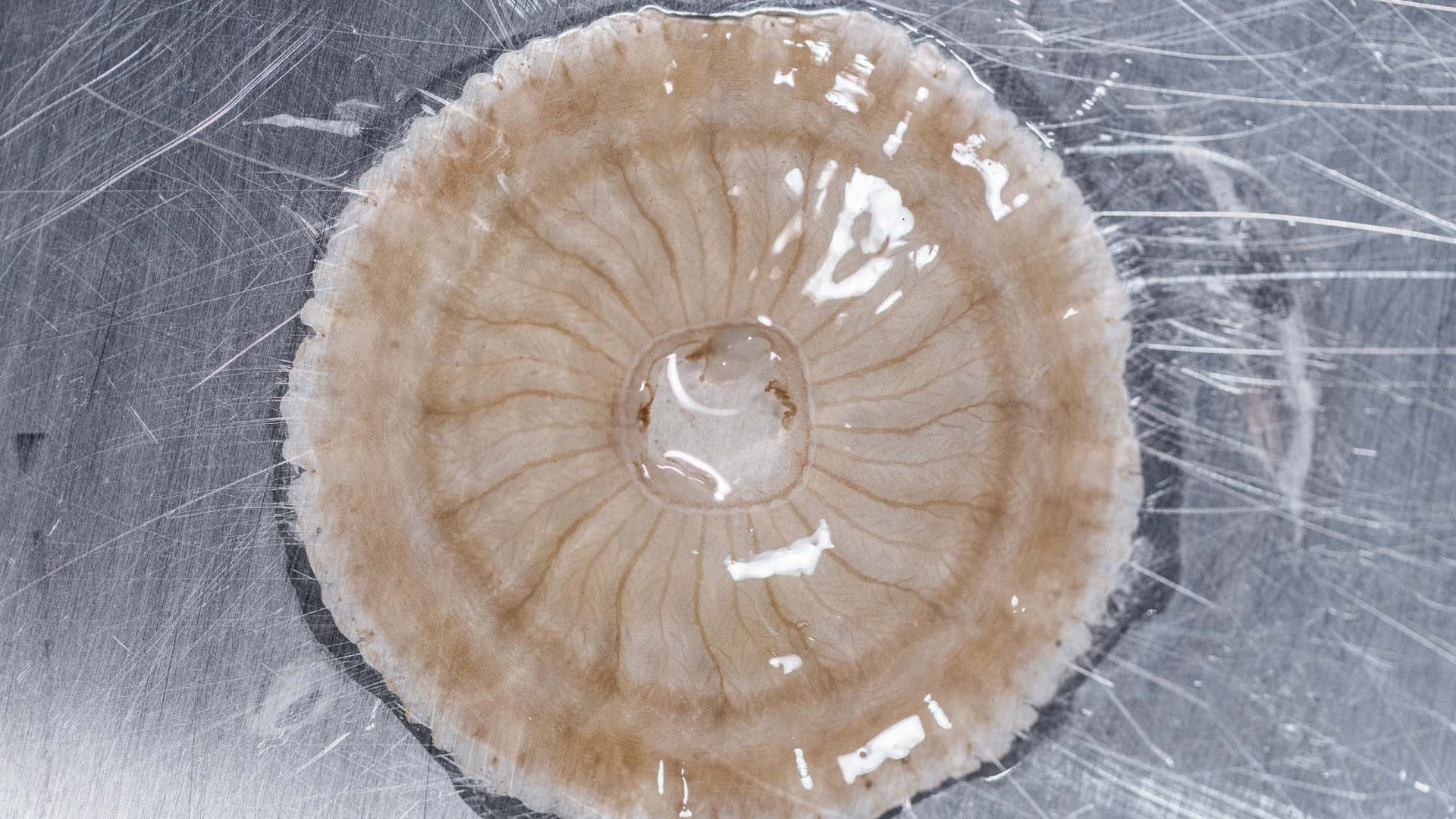
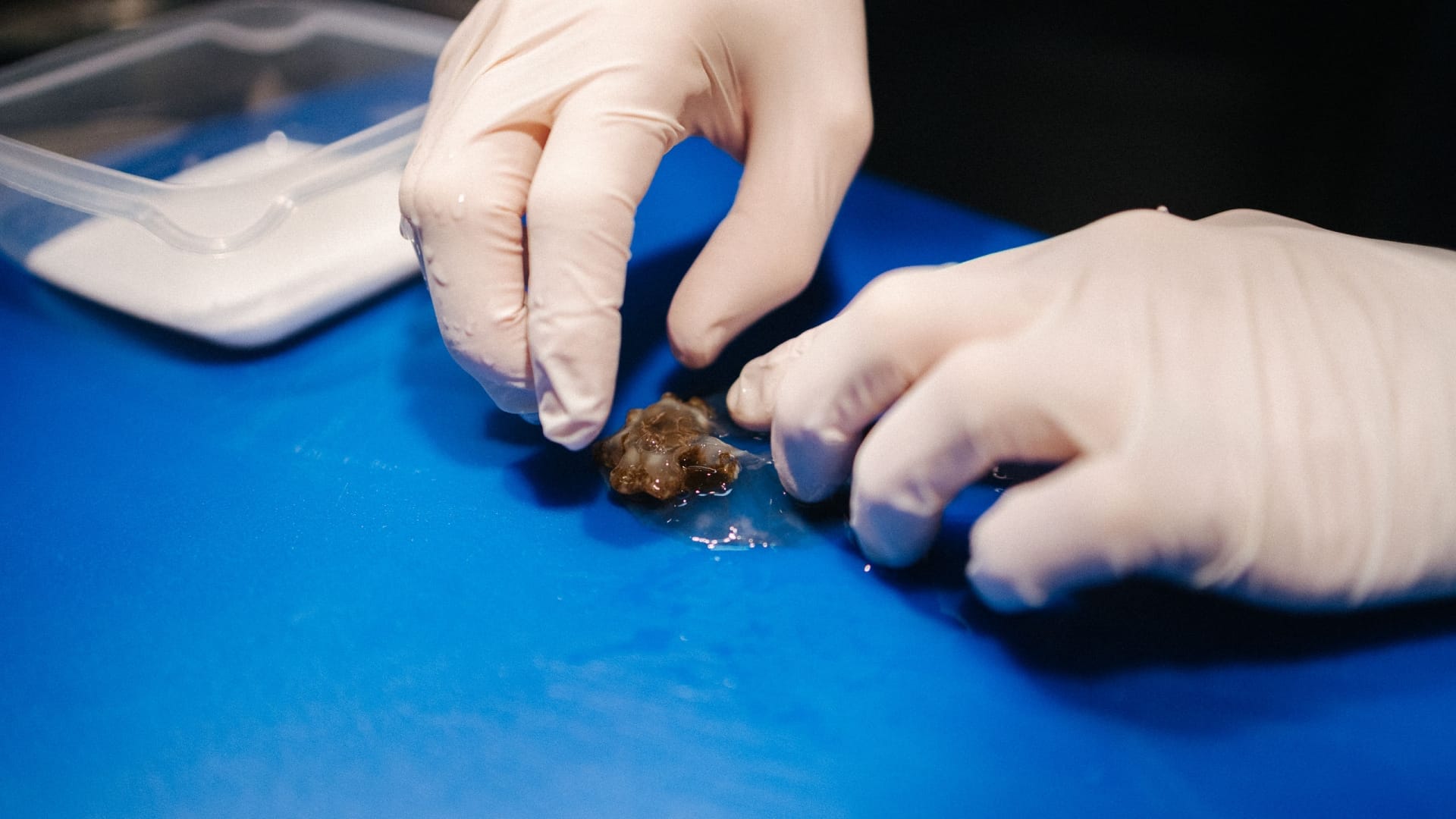
Once again we became aware of the fascinating creatures that are on the human menu. Whether fish, lobsters, pigs or just jellyfish. Most people buy a dead animal and ignore how it became that food. In the case of jellyfish, they are animals without a central nervous system. This raises the question of whether people who live vegetarian or maybe even vegan also jellyfish would eat. In fact, these fascinating creatures remind us of mushrooms that are neither plants nor animals.
Poison and pleasure
There was another hurdle with the jellyfish, they are mangrove jellyfish, which are not previously known as edible jellyfish. In Asia, other jellyfish are prepared and eaten, so there was a small residual risk that had to be overcome. We already have some respect for nettle poisons, but after the first tentative touch, our jellyfish seem to be quite cautious about these poisons.
So we got a little braver and tried the jellyfish raw. That also makes sense, it is no different with oysters. Traditionally, jellyfish are treated with salts and pickled for months.
Another jellyfish project has already presented a cookbook , which inspired us to briefly marinate the raw jellyfish with salt and sugar. Before that, the jellyfish is washed and the arms are removed, which can easily be detached from the umbrella. Similar to removing the stalk of mushrooms from the hat.
The jellyfish smell mildly of the sea, almost like a fresh oyster. The texture is soft and smooth, a bit slippery but that’s not negative at all. When chewing, you definitely notice a firmness, so they do have a bit of bite. Basically a delicacy, nobody in this country has noticed that yet.
Sea crunch
But our real goal is to make jellyfish chips. A few years ago Mie Thorborg Pedersen launched a new process a > developed. Because simple drying doesn’t work. It is only possible to preserve the jellyfish as a whole by soaking it in ethanol and then drying it.
Basically, it’s very easy to do. It just takes alcohol (96.4%), time and jellyfish. After 2 days in ethanol we put the animals on baking mats and let them dry in the oven at 30 ° C. The alcohol evaporates at room temperature, leaving you with extremely delicate crisps that are reminiscent of paper. It still smells nice of the sea.
If you now enjoy a handful of jellyfish chips, the sound of the sea unfolds with taste. Crunchy, crunchy, then soft, salty and seay. We have already designed suitable packaging for the jellyfish chips. Maybe it will be available soon, the sea in a can.
